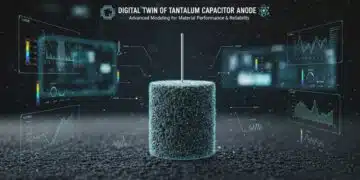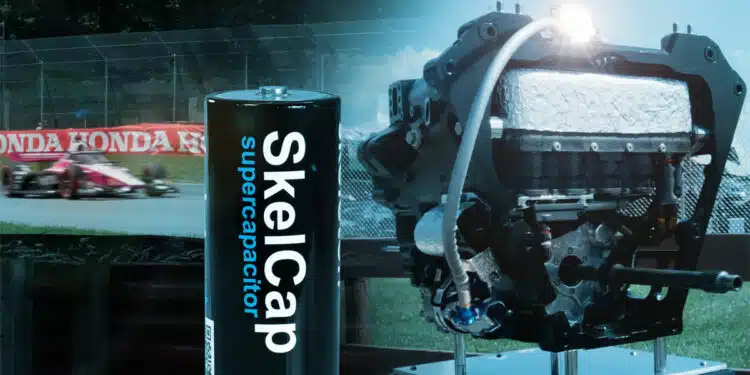Skeleton’s cutting-edge supercapacitors are now integrated into the NTT IndyCar Series innovative Energy Recovery System (ERS). All racecars are equipped with this new hybrid system, which made its competition debut at the Honda Indy 200 at Mid-Ohio on July 7th, 2024.
Skeleton Technologies has designed and manufactured the high-performance supercapacitors commissioned by Honda Racing Corporation USA (HRC US) as the new Energy Storage System (ESS), a component of the overall ERS, which also incorporates a Motor Generator Unit. HRC US helped manage this collaborative effort among industry leaders enabling IndyCar participants to embrace hybrid racing technologies.
David Arsenault, Senior Vice-President of Business Development at Skeleton Technologies, says: “We are excited to collaborate with Honda Racing Corporation USA and play a pivotal role in this ground-breaking development in the NTT IndyCar Series. Motorsports are more than just about speed, precision and a thrilling spectacle. They set a standard for technological innovation in the automotive industry. This collaboration with HRC US and other industry leaders highlights our commitment to advancing energy storage technology and pushing the boundaries of performance in motorsports. We now look forward to continuing our partnership with HRC USA and contributing to the evolution of hybrid racing technology.”
This new technology opens a new era of NTT IndyCar Series electrified hybrid racing, promising enhanced efficiency and power. By leveraging cutting-edge supercapacitor technology, the ERS optimizes energy capture and deployment, providing a substantial performance boost while maintaining the integrity and footprint of the traditional powertrain.
David Salters, President of Honda Racing Corporation USA explains: “We have had a superb collaboration with Skeleton. Using Skeleton’s advanced supercapacitor technology, we have been able to test out something novel and unique, which is what racing is for. We are also particularly glad we executed this project in a short time. There are many other promising technologies that Skeleton is working on, so we are looking forward to continuing this collaboration and innovate further together.”
The Energy Storage System is composed of 20 supercapacitors developed and supplied by Skeleton Technologies. These supercapacitors were specifically chosen for their unparalleled ability to capture and deploy energy rapidly, which is crucial in high-speed racing environments. The ESS can fully charge and discharge in approximately 4.5 seconds, providing drivers with an additional 60 horsepower to enhance their performance on the track. This rapid energy transfer capability not only improves the vehicle’s acceleration and power during critical moments but also contributes to more consistent and sustainable performance throughout the race.
The ESS developed by HRC US is one of the major components of the energy recovery system, alongside the Motor Generator Unit, produced by EMPEL in collaboration with Chevrolet and Ilmor, the DC/DC converter, produced by BrightLoop, and the voltage control device. These components work together with the existing engine control unit provided by McLaren Applied, ensuring optimal performance and reliability.
The innovative design of the ERS captures energy typically lost during braking, storing it efficiently within the supercapacitors. This stored energy is then available for drivers to deploy manually, providing a powerful boost during crucial moments such as overtaking.
Additionally, the system’s ability to start or restart the car autonomously without external assistance not only reduces race interruptions but also minimizes the risks associated with trackside assistance. This feature helped prevent a caution in the closing stages of the Honda Indy 200 at Mid-Ohio when a driver was able to fire up his car again with the hybrid – instead of the previous set-up of waiting for the safety team to arrive, which in turn would require a caution. This episode underscores the dual benefits of the ERS: enhanced competitive performance and improved safety standards in high-stakes racing environments.
































